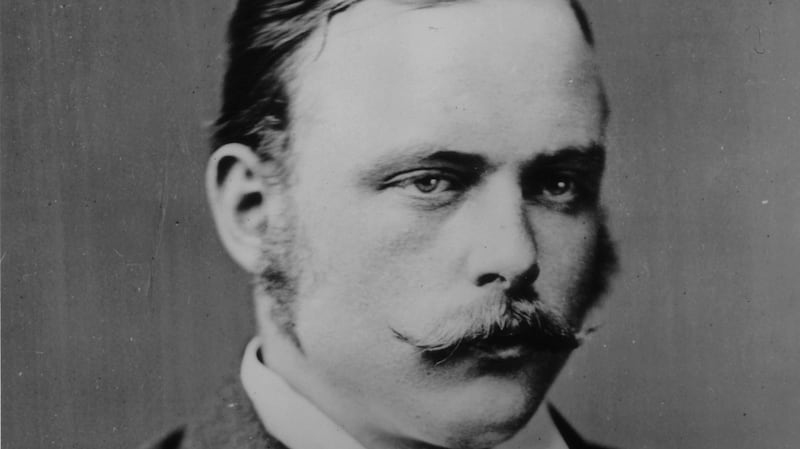100 years ago, on October 15th, 1919 a British government committee under the chairmanship of a member of the cabinet, Walter Long, met for the first time to draft a home rule bill, the fourth home rule bill, which became known as the Government of Ireland Act 1920 in its final form.
This act led to the partition of Ireland. The committee’s first decision was to create distinct legislatures for Ulster and the southern Irish provinces linked by a common Council of Ireland, comprising representatives from both. This was the first time that a separate parliament was proposed for Ulster, where unionists to date had shown nothing but unyielding advocacy to remain within Westminster.
Long was a staunch unionist and rabidly anti-Sinn Féin. As republican violence escalated in Ireland throughout 1919, it was Long who proposed the hiring of ex-servicemen to assist the Royal Irish Constabulary (RIC), a measure that would be adopted in 1920 with the recruitment of the Black and Tans and Auxiliaries to serve in Ireland. Ruthless men, he contended, could be countered only by ruthless policies, and by September 1919 he was prepared to recommend that Ireland be governed as a crown colony until such time as home rule became feasible. Unsurprisingly, the make-up of Long’s committee was unionist in outlook. There was no nationalist representation whatsoever nor were nationalists even consulted. The leading Ulster unionist, James Craig and his associates were the only Irishmen consulted during the drafting of the bill.
Before the end of the first World War, the exclusion of Ulster, or at least some of Ulster, was the only option being considered in terms of special treatment for the province. It is difficult to ascertain when exactly the option of providing a home rule parliament for Ulster was contemplated. The partition of Ireland was the first major partition in which a British cabinet participated in territory which it had formerly controlled, but it provided a precedent for later partitions, including India and Palestine.

On June 16th, 1919, Long was approached by John Atkinson, a unionist politician, lawyer and judge from Drogheda in Co Louth, who argued that neither the 1914 Home Rule Act nor home rule all round would work. He favoured a scheme that would place Ulster on a par with other provinces within a federal system. On July 24th, The Times of London publicly advocated the two-parliament option for Ireland for the first time. It proposed two provincial or state legislatures, one for the three southern provinces and one for the nine counties of Ulster, with the ultimate aim of an “establishment of an All-Ireland Parliament”. Whilst acknowledging The Times’s proposal as “a whiff of freshness to the stale atmosphere of our ancient controversy”, The Irish Times feared “the scheme would end in that very calamity of permanent Partition which The Times properly denounces as the worst of all possible solutions”. At a meeting days later in Trowbridge in Wiltshire, Long claimed that The Times’s “carefully-thought-out scheme” was worthy of close examination.
Throughout the summer of 1919, Long made a number of visits to Ireland to consult on the Irish question with the lord lieutenant, Lord John French, and the chief secretary, Ian MacPherson. Long tended not to disembark from his yacht, the Enchantress, which was docked in Kingstown (present day Dún Laoghaire) harbour. Instead, both French and MacPherson joined him on the boat to discuss Irish affairs. Based on those meetings, Long sent a memorandum to Lloyd George on September 24th recommending two parliaments for Ireland. This memorandum formed the basis of the subsequent Government of Ireland Bill.
The Government of Ireland Bill proposed that the Council of Ireland would be composed of 20 members from each parliament. In the first year it would look after transport, health, agriculture and similar matters, afterwards working towards unity of the country. It was envisaged that the council would lead to the peaceful evolution of a single parliament for all Ireland. A degree of unity within the central Irish administration headquartered in Dublin would be maintained through a common supreme court, railway policy and many other all-Ireland functions. Postal services were also to be reserved, to be administered by Westminster until they could be transferred to an all-Ireland assembly if Irish unity was realised.
Long knew the proposals would not placate Sinn Féin, “But nothing short of the setting up of a Republic would satisfy Sinn Féin. Therefore why not recognise the fact and say so frankly?” It was never the intention to do so. The British government was only interested in securing the support of Ulster unionists. The Government of Ireland Bill did not try to solve the Irish question, it was an attempt to settle the Ulster question.
Long’s committee advocated that all of the nine counties of Ulster should be included in the northern parliament. This was one of many objections from Ulster unionists. The main problems they had were; an admission of home rule, something they had never sought before; reduction of Ulster representation in Westminster to just twelve seats; and the abandonment of many Protestants and unionists to the southern jurisdiction. Ulster unionists sought the six counties of Antrim, Armagh, Derry, Down, Fermanagh and Tyrone, and not the nine counties of Ulster as this was the maximum area they felt they could dominate without being “outbred” by Catholics. To avoid a nine-county parliament, Craig had even suggested the establishment of a Boundary Commission to examine the distribution of population along the borders of the whole of the six counties. He would be vehemently opposed to the imposition of a boundary commission after the Anglo-Irish Treaty was signed in December 1921.
The decision of the Ulster Unionist Council was deeply unpopular amongst the 70,000 Protestants of counties Donegal, Cavan and Monaghan who were sacrificed to the southern administration. Thomas Moles, Westminster MP, explained that the three counties had to be abandoned in order to save the six counties, “In a sinking ship, with life-boats sufficient for only two-thirds of the ship’s company, were all to condemn themselves to death because all could not be saved?”
Ulster unionists outside of the six counties resigned from the Ulster Unionist Council. Many members of the Ulster Women’s Unionist Council from Cavan, Donegal and Monaghan also resigned. Outside of Ulster, southern unionists left the Irish Unionist Alliance and formed the Unionist Anti-Partition League, in opposition to the impending partition of Ireland.
The British government only agreed to acceding to the Ulster unionists wishes to confine the northern parliament to six counties in the spring of 1920, just as the bill was being brought before the House of Commons. Even though the Ulster Unionist Council endorsed the Government of Ireland Bill reluctantly, many Ulster unionists eventually concluded that the scheme proposed in the Government of Ireland Act would “cause the least diminution of their Britishness”.
It has often been cited that the Government of Ireland Bill was allowed to pass relatively unchallenged due to the vacuum in nationalist representation at Westminster. There were just seven Irish nationalist MPs remaining in Westminster (six Irish Parliamentary Party members from Ireland and TP O’Connor from Liverpool) after the 1918 general election, instead of 80. It could be argued that even 80 nationalist MPs would have made little difference considering the make-up of the House of Commons after the election. The Conservative Party, Lloyd George’s Coalition Liberal Party and Irish unionists won over 500 seats, an overwhelming majority. The British Labour Party, with 57 seats, opposed the Government of Ireland Bill, with little effect. Former prime minister Herbert Asquith and his vastly reduced Liberal Party of just 36 seats, also opposed the “cumbrous, costly, unworkable scheme”. His opposition also made no imprint on the final act. It is doubtful that Sinn Féin’s presence with its 73 seats would have made a difference either.
What little voice the seven nationalist MPs had was further diminished by the Catholic Church’s belief that they should not participate in the committee stages of the Government of Ireland Bill nor suggest amendments to the bill. The Catholic Church was virulently opposed to partition and believed that participating in the framing of the “Partition Bill” would be seen as a sign of its acceptance. The leading nationalist MP left in Westminster, Joseph Devlin, condemned the bill as “conceived in Bedlam”, “ridiculous” and “fantastic”. He voted against it but did not in any way contribute to its final shape.
Sinn Féin, of course, was not in the House of Commons to debate the Government of Ireland Bill. As the bill was making its way through parliament, the British government was waging a war with Sinn Féin and its military wing, the Irish Volunteers (renamed the Irish Republican Army). That the Government of Ireland Act came into law as Britain was at open war with Sinn Féin, who was supported by a considerable majority on the island, shows the total air of unreality that surrounded the act. It was in an atmosphere of war, sectarian hatred and boycotts that the bill became an act on December 23rd, 1920 and elections to the new parliaments were set for the following May. Despite the substantial opposition to the Government of Ireland Act, the British government continued with its implementation with the act coming into effect on May 3rd, 1921. Three weeks later, elections were held. Known as the “Partition Election”, it determined the make-up of the first parliament of the new entity that was Northern Ireland.
Cormac Moore is author of Birth of the Border: The Impact of Partition in Ireland

















